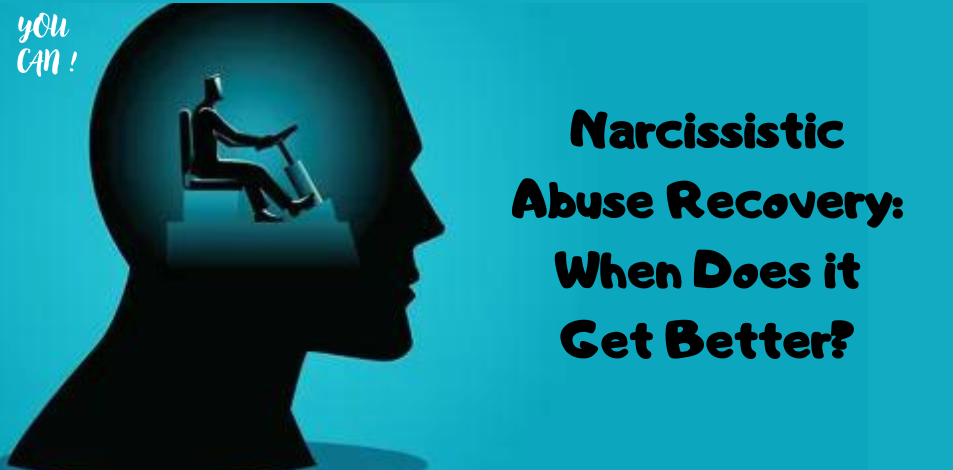
Recovering from narcissistic abuse is a difficult and often time-consuming process. The damage inflicted by a narcissistic partner can leave deep emotional scars, erode self-esteem, and disrupt one’s sense of reality. Understanding the journey of recovery and recognizing the signs of healing can provide hope and guidance for those on this difficult path. This article explores the stages of recovery and when you can expect to start feeling better.
Understanding Narcissistic Abuse
The Nature of Narcissistic Abuse
Narcissistic abuse is a form of emotional manipulation and control practiced by individuals with narcissistic personality traits. Common tactics include emotional manipulation, isolation, devaluation, and exploitation, all designed to undermine the victim’s confidence and independence.
The Impact of Narcissistic Abuse
Victims often experience:
Low self-esteem: Constant criticism and self-deprecation lead to a decrease in self-worth.
Emotional disturbances: The cycle of idealization and devaluation creates confusion and instability.
Isolation: Narcissists often isolate their victims from friends and family, increasing their control.
Related : What Is The Toxic Relationship Between An Empath And Narcissist?
PTSD and Anxiety: The trauma of abuse can lead to symptoms of PTSD, including flashbacks, hypervigilance, and extreme anxiety.
The Journey of Recovery
The process of recovering from narcissistic abuse involves several stages. It’s important to remember that healing is not linear and that each person’s journey is unique. Here are common stages and milestones on the road to recovery.
- Acknowledge and Accept
Timeframe: Weeks to Months
The first step in recovery is acknowledging and accepting that you’ve been subjected to narcissistic abuse. This stage includes:
Acknowledging the abuse: Coming to terms with the reality of the abuse and its impact.
Understanding Narcissism: Educating yourself about narcissistic behavior and tactics to help you make sense of your experiences.
Breaking Denial: Overcoming Denial and Reducing the Abuse.
Signs of Progress:
Feeling validated and understood when you recognize narcissistic abuse.
Starting to see patterns in the abuser’s behavior.
- Disconnection and No Contact
Timeframe: Months
To heal, it is essential to establish physical and emotional distance between yourself and the narcissist. This stage includes:
No Contact: Cutting off all contact with the abuser to prevent further manipulation.
Setting Boundaries: Setting and maintaining firm boundaries to protect yourself.
Signs of Progress:
Decreased anxiety and stress when you are away from the abuser.
Beginning to regain a sense of independence and control over your life.
- Emotional Healing and Self-Rediscovery
Timeframe: Several months to a year
This stage focuses on healing your emotional wounds and rediscovering your true self. Key aspects include:
Therapy and Support Groups: Seeking professional help to address trauma and joining support groups for health and community validation.
Related : Two Guaranteed Things That Will Happen to You if You’re an Authentic Person
Self-Care and Self-Love: Prioritizing self-care activities and practicing self-compassion.
Rediscovering Emotions: Engaging in hobbies and activities that bring you joy and fulfillment.
Signs of Progress:
Improved self-esteem and self-worth.
Reduced feelings of guilt and shame.
Increased ability to experience joy and engage in life.
- Rebuild and Move Forward
Timeframe: 1-2 years
In this phase, you focus on rebuilding your life and creating a future free from the shadows of narcissistic abuse. This includes:
Reconnecting with loved ones: Rebuilding relationships with friends and family who were distant during the abuse.
Setting new goals: Setting and pursuing personal and professional goals.
Developing healthy relationships: Learning to trust again and forming healthy, balanced relationships.
Signs of Progress:
Feeling optimistic about the future.
Achieving personal goals and accomplishments.
Experiencing healthy, supportive relationships.
When do things get better?
The timeline for recovery varies greatly between individuals. However, many people begin to see significant improvements within six months to a year after leaving an abusive relationship. Full recovery can take longer, often one to two years, as you work to heal deep emotional wounds and rebuild your life.
Factors Influencing Recovery:
Support System: A strong support network of friends, family, and professionals can speed recovery.
Personal Resilience: Individual resilience and coping mechanisms play a critical role.
Duration and Severity of Abuse: Longer, more severe periods of abuse may require more time to heal.
Conclusion
Recovering from narcissistic abuse is a journey that requires time, patience, and self-compassion. While the road to recovery is difficult, it is also empowering and transformative. By recognizing the abuse, setting boundaries, seeking support, and focusing on self-care, you can reclaim your life and rediscover your true self. Remember that healing is possible, and with each step forward, you move closer to a future filled with hope, resilience, and true joy.




